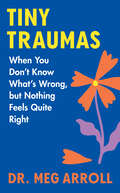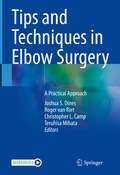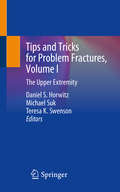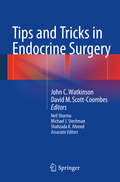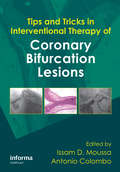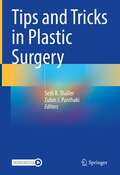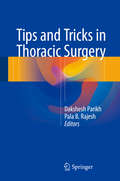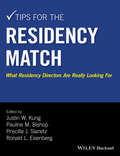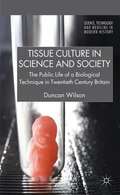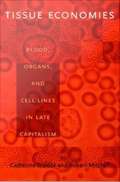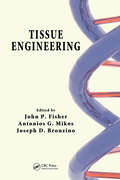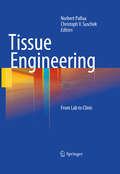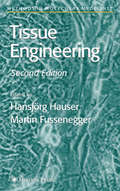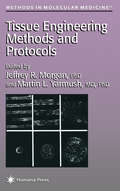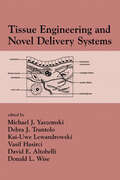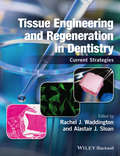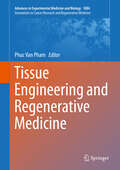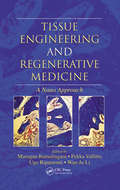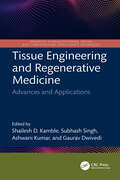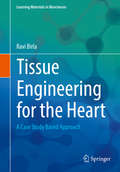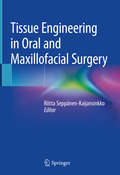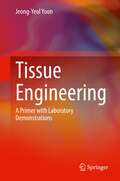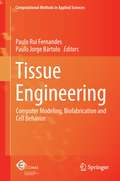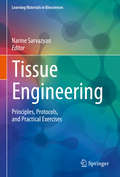- Table View
- List View
Tiny Sunbirds Far Away: Winner of the Costa First Novel Award, from the author of The Language of Kindness
by Christie WatsonWINNER OF THE COSTA FIRST NOVEL AWARD. 'Everything changed after Mama found Father lying on top of another woman.' Blessing and her brother Ezikiel adore their larger-than-life father, their glamorous mother and their comfortable life in Lagos. But all that changes when their father leaves them for another woman. Their mother is fired from her job at the Royal Imperial Hotel - only married women can work there - and soon they have to quit their air-conditioned apartment to go and live with their grandparents in a compound in the Niger Delta. Adapting to life with a poor countryside family is a shock beyond measure after their privileged upbringing in Lagos. Told in Blessing's own beguiling voice, Tiny Sunbirds Far Away shows how some families can survive almost anything. At times hilarious, always poignant, occasionally tragic, it is peopled with characters you will never forget.(P)2012 Quercus Editions Ltd
Tiny Traumas: When You Don't Know What's Wrong, but Nothing Feels Quite Right
by Meg ArrollPsychologist Dr. Meg Arroll offers a much-needed framework for recognizing and combatting the devastating cumulative effects of small everyday wounds—“tiny traumas”—that, like major traumas, can negatively shape our lives.Have you ever felt at a loss for an answer when asked: ‘How are you really feeling?” Maybe you can’t quite put your finger on it, but you know something is definitely off. Microaggressions, challenging family relationships, toxic positivity, work and pandemic stress, gaslighting—these are just a few examples of what psychologist Dr. Meg Arroll calls “Tiny T” trauma. These tiny traumas can slowly build up inside of us, and if ignored for too long, can manifest in our lives as high-functioning anxiety, perfectionism, binge eating, insomnia, broken relationships, and a host of other problems. While advice on healing from major trauma is plentiful, there is little guidance available to help us recover from these “smaller” yet emotionally devastating traumas that are common to all of us. Now, Dr. Meg fills that gap and helps us find peace with this revolutionary guide.In Tiny Traumas, Dr. Meg introduces her three-step AAA approach that allows us to start understanding and healing from these tiny traumas:Awareness: discover your unique constellation of tiny traumasAcceptance: see how these tiny traumas show up in your life and start processing themAction: start taking the steps to actively create the life you desireTiny Traumas teaches readers how to recognize and address past experiences so we can overcome the lasting pain and detrimental effects and truly start living the happier, more peaceful lives we deserve.
Tips and Techniques in Elbow Surgery: A Practical Approach
by Joshua S. Dines Roger Van Riet Christopher L. Camp Teruhisa MihataBringing together the top elbow surgeons from around the world, this contemporary, up-to-date text presents surgical tips and techniques for the most common elbow procedures. Because authorship will be limited to leaders in the field, the emphasis will be on practical tips and techniques that can readily be implemented in the clinical and surgical environment.This text covers approximately 50 of the most common elbow surgical procedures, which are further subdivided into the following five categories: Trauma, Degenerative, Arthroscopy, Sports, and Neurologic. The focus of each chapter is on describing the precise clinical and surgical techniques used by the experts in each of these areas. Each chapter highlights a specific procedure and benefits from a consistent chapter approach: Description, Principles, Indications, Contraindications, Procedural Steps, Handling Difficulties, and Bailout and Salvage options. Given the international representation of the editors and authors, Tips and Techniques in Elbow Surgery will appeal to a very wide audience and will be of benefit to any surgeon who treats elbow injuries.
Tips and Tricks for Problem Fractures, Volume I: The Upper Extremity
by Daniel S. Horwitz Michael Suk Teresa K. SwensonThis pocket-sized, user-friendly text provides a simple guide for the treatment of common orthopedic fractures of the upper extremity, focusing on techniques, tips and tricks. It utilizes a case-based structure with great attention given to the specific steps required to obtain excellent outcomes while also pointing out pitfalls and ways to salvage intraoperative complications. The chapters are presented anatomically from shoulder to fingertips, beginning with clavicle fractures, acromioclavicular and sternoclavicular joint injuries and scapula fractures. The various types of fracture to the humerus, elbow, radius and ulna follow, with concluding chapters covering fractures and dislocations of the wrist and hand. Throughout the book, a consistent chapter format is followed, comprised of an introduction, clinical presentation and diagnosis, relevant radiology, management strategies, outcomes, and clinical pearls and pitfalls.Incorporating the most recent implants and operative techniques, Tips and Tricks for Problem Fractures, Volume I will be a timely and handy resource for orthopedic surgeons, fellows, residents and students.
Tips and Tricks in Endocrine Surgery
by John C. Watkinson David M. Scott-CoombesThis book provides a concise summary across all aspects of endocrine surgery, covering the major endocrine organs and discussing aspects of surgical care. It comprises five sections covering the major endocrine organs/systems, each with a specialist section editor. Within each section there are a number of brief (2-3 page) chapters, written in a combination of prose and bullet points, a format that is conducive to both detailed reading and quicker, "dipping in", review. Each chapter contains a "Pearls and Pitfalls" summary box. The text takes into account the latest evidence and current expert opinion from an internationally renowned list of authors.
Tips and Tricks in Interventional Therapy of Coronary Bifurcation Lesions
by Antonio Colombo Issam D. MoussaThere is much discussion in the field of interventional cardiovascular therapy as to what is the best approach to treating coronary bifurcation lesions. Many advocate for provisional stenting, stenting of the main vessel with subsequent stenting of the side branch as needed, while some advocate for elective double stenting of both branches. This bo
Tips and Tricks in Plastic Surgery
by Zubin J. Panthaki Seth R. ThallerThe book covers the most innovative, contemporary, and common plastic surgery procedures, and aims to improve both reconstructive and aesthetic surgical results while decreasing the incidence of complications. In doing so, patient satisfaction, quality of care, and safety are enhanced. The text provides a wealth of knowledge seeking to enhance results, reduce morbidity, and ensure patient satisfaction. The book consists of five parts, running the gamut of Aesthetic Surgery, Reconstructive Procedures, Pediatric and Craniomaxillofacial Surgery, Adjunctive Procedures, and finally Hand and Upper Extremity. Written by experts in the field, each chapter describes tips and tricks through clear technical details, medical illustrations and, in some chapters, detailed videos. Tips and Tricks in Plastic Surgery serves as a valuable resource for clinicians, professionals and practitioners, as well as medical students on rotation.
Tips and Tricks in Thoracic Surgery
by Dakshesh Parikh Pala B. RajeshThoracic surgery is a high-risk speciality and requires attention to detail. This book, compiled by expert surgeons from around the world, offers pearls of wisdom on how to improve the surgical outcome and how to reduce unnecessary complications. The book is designed so that it covers all common thoracic operations in both adults and children as well as dealing with much rarer indications. It includes a discussion on the complications of surgery and provides specific tips on how to avoid intra-operative and postoperative complications. Tips and Tricks in Thoracic Surgery is a fully illustrated, comprehensive text aimed at qualified and trainee thoracic surgeons.
Tips for the Residency Match
by Priscilla J. Slanetz Justin W. Kung Ronald L. Eisenberg Pauline M. BishopTips for the Residency Match is a unique guide for medical students applying for residency positions. Packed with hints, tips, and recommendations from both program directors and current residents, Tips for the Residency Match chronologically covers the key information required to excel during the residency application process - from résumé advice and preparing for the interview and beyond. Both insightful and practical, Tips for the Residency Match features a wide spectrum of medical specialties and an extra section for foreign graduates.Tips for the Residency Match is: * Uniquely tailored to the needs of those applying for US residency positions* Written by leading Residency Directors and current residents in the major specialties * Offers unprecedented access to how departmental decisions about the Match are madeBoasting expert advice and a wide scope, Tips for the Residency Match is the ideal companion for those applying for residency positions throughout the United States.
Tissue Culture in Science and Society
by Duncan WilsonTissue Culture in Science and Society sheds new light on the biological technique known as 'tissue culture', showing how it featured regularly in British newspapers, magazines and novels, and appeared in cinema and on television throughout the twentieth century. It details how tissue culture was given meaning thanks to interplay between scientific and cultural concerns, including the modernist reappraisal of lifespan, the body and reproduction, postwar enthusiasm for 'magic bullets' and more recent discussion of patient rights. By highlighting this interaction, and charting tissue culture's history through to the present day, Wilson provides much needed context and balance for current debates.
Tissue Economies: Blood, Organs, and Cell Lines in Late Capitalism
by Robert Mitchell Catherine WaldbyAs new medical technologies are developed, more and more human tissues--such as skin, bones, heart valves, embryos, and stem cell lines--are stored and distributed for therapeutic and research purposes. The accelerating circulation of human tissue fragments raises profound social and ethical concerns related to who donates or sells bodily tissue, who receives it, and who profits--or does not--from the transaction. Catherine Waldby and Robert Mitchell survey the rapidly expanding economies of exchange in human tissue, explaining the complex questions raised and suggesting likely developments. Comparing contemporary tissue economies in the United Kingdom and United States, they explore and complicate the distinction that has dominated practice and policy for several decades: the distinction between tissue as a gift to be exchanged in a transaction separate from the commercial market and tissue as a commodity to be traded for profit. Waldby and Mitchell pull together a prodigious amount of research--involving policy reports and scientific papers, operating manuals, legal decisions, interviews, journalism, and Congressional testimony--to offer a series of case studies based on particular forms of tissue exchange. They examine the effect of threats of contamination--from HIV and other pathogens--on blood banks' understandings of the gift/commodity relationship; the growth of autologous economies, in which individuals bank their tissues for their own use; the creation of the United Kingdom's Stem Cell bank, which facilitates the donation of embryos for stem cell development; and the legal and financial repercussions of designating some tissues "hospital waste. " They also consider the impact of different models of biotechnology patents on tissue economies and the relationship between experimental therapies to regenerate damaged or degenerated tissues and calls for a legal, for-profit market in organs. Ultimately, Waldby and Mitchell conclude that scientific technologies, the globalization of tissue exchange, and recent anthropological, sociological, and legal thinking have blurred any strict line separating donations from the incursion of market values into tissue economies.
Tissue Engineering
by Joseph D. Bronzino John P. Fisher Antonios G. MikosIncreasingly viewed as the future of medicine, the field of tissue engineering is still in its infancy. As evidenced in both the scientific and popular press, there exists considerable excitement surrounding the strategy of regenerative medicine. To achieve its highest potential, a series of technological advances must be made. Putting the numerous
Tissue Engineering
by Norbert Pallua Christoph V. SuschekTissue engineering is a multidisciplinary field incorporating the principles of biology, chemistry, engineering, and medicine to create biological substitutes of native tissues for scientific research or clinical use. Specific applications of this technology include studies of tissue development and function, investigating drug response, and tissue repair and replacement. This area is rapidly becoming one of the most promising treatment options for patients suffering from tissue failure. This abundantly illustrated and well-structured guide serves as a reference for all clinicians and researchers dealing with tissue engineering issues in their daily practice.
Tissue Engineering
by Martin M. Fussenegger Hansjörg HauserThis book provides a comprehensive volume that integrates a wide spectrum of methods required to implement current and future progress in tissue engineering. Leading experts in various disciplines provide examples of recent advances in tissue engineering-related methodologies. Authors present authoritative discussions on topics. The book supplies an understanding of diverse technologies and methods used to drive tissue engineering into a clinical reality. The knowledge contained in this volume represents the impressive progress made in the decade when tissue engineering rapidly evolved.
Tissue Engineering
by Jeffrey R. Morgan Martin L. YarmushThe first major collection of cutting-edge methods developed and used by leading researchers in the tissue engineering field. These hands-on experts describe easily reproducible protocols for the production and evaluation of polymers, scaffolds, and composites, as well as methods for the isolation, culture, and analysis of cells, including the combination of cells with a variety of materials or devices. Quantitative methods designed to assess cell performance and cell function that will also illuminate our understanding of cellular processes and the cellular response to the chemical and mechanical environment of a functional organ/tissue are also offered.
Tissue Engineering And Novel Delivery Systems
by Vasif Hasirci Kai-Uwe Lewandrowski Debra J. Trantolo Michael J. Yaszemski Donald L. Wise David E. AltobelliEssential to anyone working in the field, this reference focuses on latest advancements in tissue construction, repair and regeneration focusing on developments in gene and drug therapy, the evolution of tissue-engineered products, and new technologies for the design of functional tissues and organ systems.
Tissue Engineering and Regeneration in Dentistry: Current Strategies
by Alastair J. Sloan Rachel J. WaddingtonThis pioneering book is uniquely dedicated to the science of Tissue Engineering and Regeneration in Dentistry. It presents the growth of knowledge and advancement in this specialist field along with laboratory considerations for the dental researcher. Furthermore it offers detailed coverage of the basic underlying principles and scientific evidence as well as highlighting the practical applications via 'protocol' boxes throughout. A must-have read for researchers and specialist clinicians in tissue engineering, oral biology, dental materials science, periodontology and oral surgery.
Tissue Engineering and Regenerative Medicine (Advances in Experimental Medicine and Biology #1084)
by Phuc Van PhamThis new series, based on a bi-annual conference and its topics, represents a major contribution to the emerging science of cancer research and regenerative medicine. Each volume brings together some of the most pre-eminent scientists working on cancer biology, cancer treatment, cancer diagnosis, cancer prevention and regenerative medicine to share information on currently ongoing work which will help shape future therapies. These volumes are invaluable resources not only for already active researchers or clinicians but also for those entering these fields, plus those in industry. Tissue Engineering and Regenerative Medicine is a proceedings volume which reflects papers presented at the 3rd bi-annual Innovations in Regenerative Medicine and Cancer Research conference; taken with its companion volume Stem Cells: Biology and Engineering it provides a complete overview of the papers from that meeting of international experts.
Tissue Engineering and Regenerative Medicine: A Nano Approach
by Murugan Ramalingam Ugo Ripamonti Pekka Vallittu Wan-Ju LiThrough the integration of strategies from life science, engineering, and clinical medicine, tissue engineering and regenerative medicine hold the promise of new solutions to current health challenges. This rapidly developing field requires continual updates to the state-of-the-art knowledge in all of the aforementioned sciences. Tissue Engineering
Tissue Engineering and Regenerative Medicine: Advances and Applications (Advances in Manufacturing, Design and Computational Intelligence Techniques)
by Ashwani Kumar Subhash Singh Gaurav Dwivedi Shailesh D. KambleThe book emphasizes the technological advancements in tissue engineering related to biomaterials and biomanufacturing techniques. It further discusses important topics such as 3D bioprinting, process parameter optimization, Convolutional Neural Network (CNN) for stem cell imaging, diabetes risk prediction and Parkinson’s disease detection using machine learning, telehealth systems, acute pancreatitis, and data-driven monitoring of chronic diseases.This book: Explores the role of artificial intelligence in designing biomaterials, optimizing fabrication processes, and predicting tissue formation Focuses on technological advancements in tissue engineering related to biomanufacturing techniques, and biomaterials Discusses the denture base acrylic resins, brain tumor detection, CNN for stem cell imaging and machine learning for diabetes risk prediction and Parkinson’s disease detection. Covers acute myocardial infarction, post-operative urinary retention, telehealth systems, graph convolutional network, and acute pancreatitis. Explains the role of serum magnesium levels in febrile convulsions and Apache-II Score and Ranson Criteria with Modified CT Severity Index. It is primarily written for senior undergraduates, graduate students, and academic researchers in the fields of manufacturing engineering, biomedical engineering, materials science, biomaterials, mechanical engineering, and production engineering.
Tissue Engineering for the Heart
by Ravi BirlaThis book covers the fundamentals of tissue engineering for the heart, starting with the basics of organ generation, sensors in tissue and organ fabrication, and the current state-of-the-art in stem cell engineering for the heart. With this foundation in place, the remaining chapters focus on specific aspects of the cardiovascular system, starting with heart muscle, then biological pumps, followed by bioartificial ventricles, and finally, bioartificial hearts. Throughout the course of this book, twenty-two in-depth case studies are presented. Each case study has been selected to illustrate specific design schemes for tissue and organ fabrication. This is an ideal book for upper-level undergraduate and graduate students studying tissue engineering and organ regeneration, especially those focused on cardiac regeneration. This book also: Includes twenty-two case studies that illustrate specific design schemes for engineering the heart Provides open-ended discussion questions at the end of each chapter as well as a detailed reference list to encourage further research and reading Covers the basics of organ fabrication as well as sensor technology and genetic engineering as they relate to tissue and organ fabrication
Tissue Engineering in Oral and Maxillofacial Surgery
by Riitta Seppänen-KaijansinkkoThis book provides a thorough, up-to-date description of the scientific basis and concepts of tissue engineering in the oral and maxillofacial region. The opening chapters present an introduction to tissue engineering, describe the roles of biomaterials and stem cells, discuss the use of growth factors, and examine potential adverse reactions. The challenges of soft and hard tissue engineering for oral and maxillofacial reconstruction are then considered in detail. It is explained what has been achieved to date, and potential future perspectives are explored. The importance and the verification of adequate vascularization are discussed, and a further focus is the use of 3D printing, both in the planning and production of scaffolds and in the bioprinting of cells and biomaterials. Information is also included on safety, efficacy, and regulatory aspects. Tissue Engineering in Oral and Maxillofacial Surgery will be of interest to all researchers and practitioners who wish to learn more about the potential of tissue engineering to revolutionize practice in oral and maxillofacial surgery.
Tissue Engineering: A Primer with Laboratory Demonstrations
by Jeong-Yeol YoonTissue Engineering: A Primer with Laboratory Demonstrations concisely covers the fundamental basics of tissue engineering. A series of simple, low-cost, and easy-to-implement laboratory modules are included in each chapter, along with experimental results with actual images and data, and a set of questions and discussion topics for each laboratory exercise. The textbook is appropriate for upper-undergraduate and graduate-level courses in cell and tissue engineering. The inclusion of images and data for all laboratory exercises also makes the book a valuable tool for scientists and engineers to learn the concepts in a hands-on and visual manner and lay a foundation to build their experiments towards their research and commercial development.
Tissue Engineering: Computer Modeling, Biofabrication and Cell Behavior
by Paulo Jorge Bártolo Paulo Rui FernandesThis book describes the state of the art on computational modeling and fabrication in Tissue Engineering. It is inspired by the ECCOMAS thematic conference, the European Committee on Computational Methods in Applied Sciences, on Tissue Engineering, held in Lisbon, Portugal, June 2-4, 2011. Tissue Engineering is a multidisciplinary field involving scientists from different fields. The development of mathematical methods is quite relevant to understand cell biology and human tissues as well to model, design and fabricate optimized and smart scaffolds. Emphasis is put on mathematical and computational modeling for scaffold design and fabrication. This particular area of tissue engineering, whose goal is to obtain substitutes for hard tissues such as bone and cartilage, is growing in importance.
Tissue Engineering: Principles, Protocols, and Practical Exercises (Learning Materials in Biosciences)
by Narine SarvazyanTissue engineering and regenerative medicine is a new, interdisciplinary branch of science that combines knowledge from numerous scientific fields including biology, biochemistry, physics, chemistry, applied engineering, and medicine. It aims to restore damaged parts of the human body by rebuilding them in vitro using individual building blocks of biological tissues such as cells and the extracellular matrix that surrounds them. The authors hope to spark students’ interest in this exciting new field of science as well as give them a basic knowledge of its terminology.This book is based on a hands-on practical course in tissue engineering conducted by the Fulbright US Scholar recipient, Dr. Narine Sarvazyan (George Washington University, Washington USA). It provides an overview of the core topics of the tissue engineering field, including stem cell differentiation, the role of extracellular matrix and attachment proteins, scaffolds, and culturing of engineered tissues. Each chapter is accompanied by hands-on demonstrations and self-check questions. The text is easily readable for students of all backgrounds and the described protocols can be conducted using common lab equipment. This textbook is also useful for developing undergraduate and graduate courses that teach basic methods and approaches in this promising and rapidly developing field.

